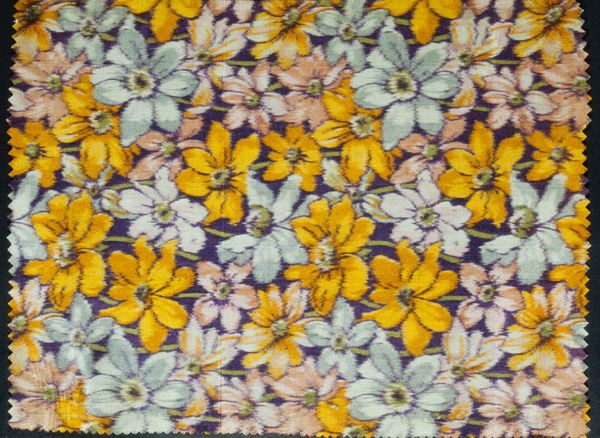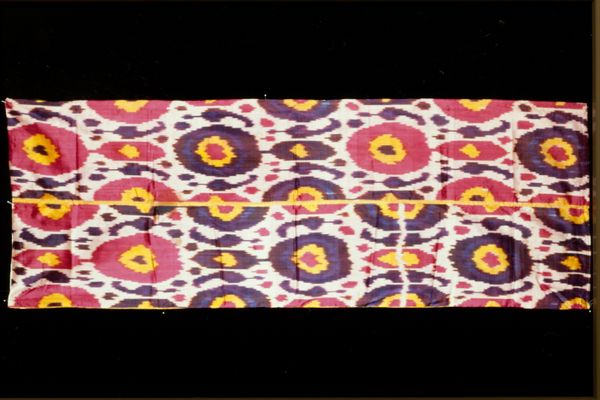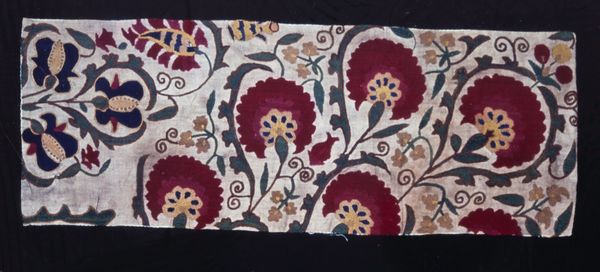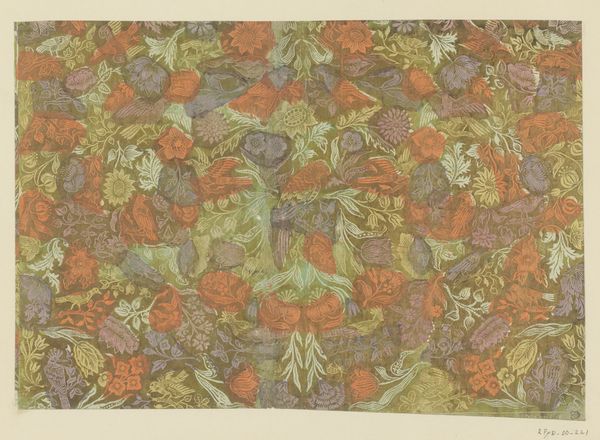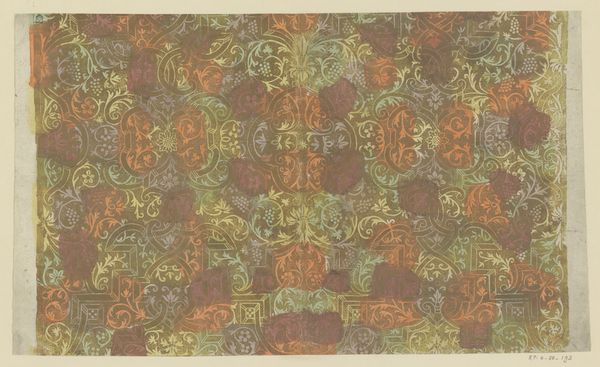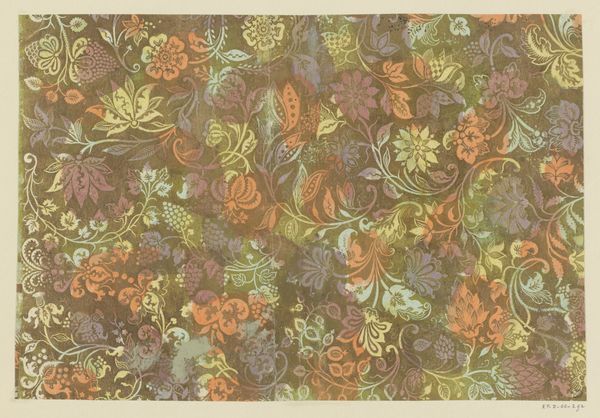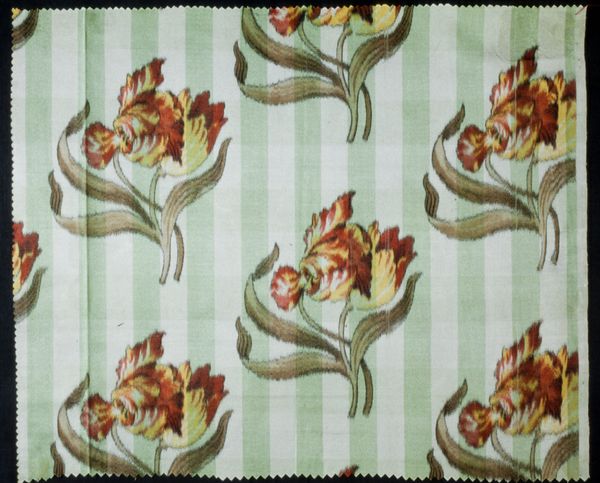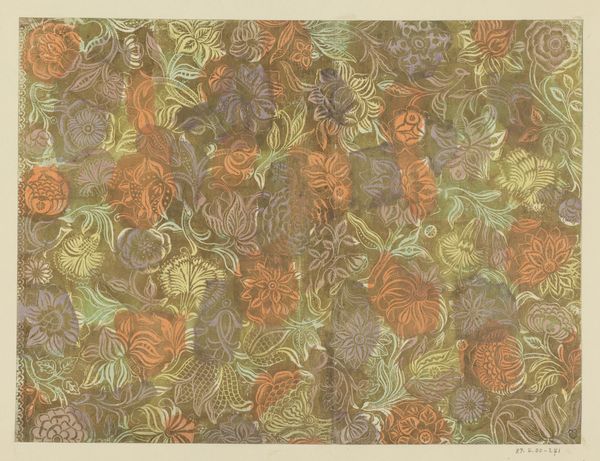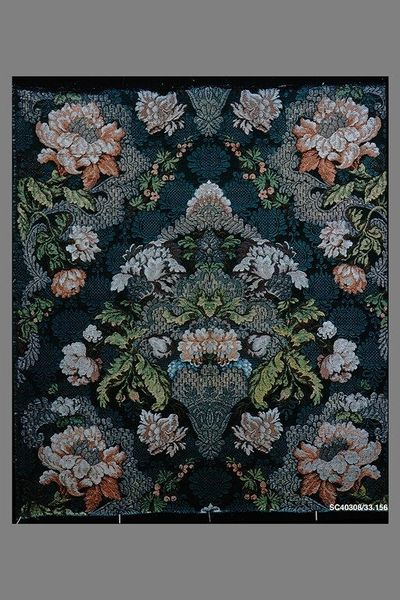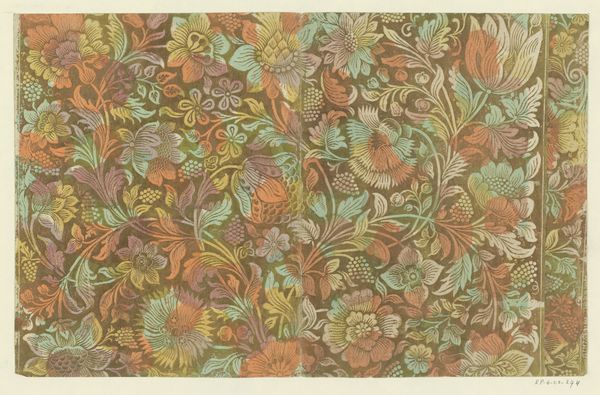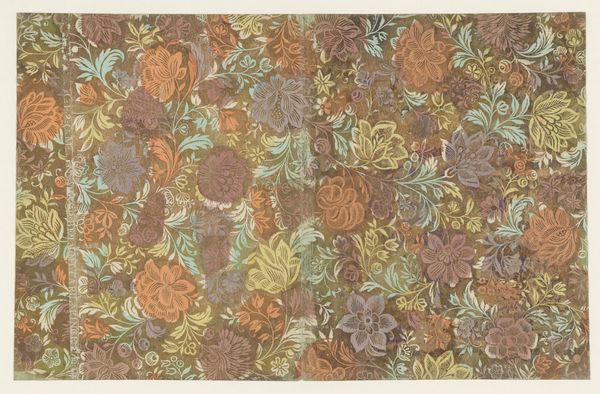
fibre-art, textile
#
art-deco
#
fibre-art
#
naturalistic pattern
#
organic
#
loose pattern
#
textile
#
geometric pattern
#
abstract pattern
#
organic pattern
#
repetition of pattern
#
vertical pattern
#
pattern repetition
#
layered pattern
#
funky pattern
Dimensions: 110 3/4 x 31 5/8 in. (281.31 x 80.32 cm)
Copyright: No Known Copyright
Editor: So, this piece is "Juin (June)," a cotton textile made in 1929 by F. Schumacher & Co. It’s currently held at the Minneapolis Institute of Art. I am struck by how such a practical material has been elevated by this really sophisticated pattern. What do you see in it? Curator: The key here, for me, is recognizing textile not just as a decorative element, but as a product of material conditions. Think about the cotton itself: where was it grown? Who harvested it? These patterns, which mimic organic shapes, conceal a story of labour, trade and manufacture. The rise of companies such as F. Schumacher in this era suggests how mass-produced textiles found a niche within interior decoration. Considering what we know about Art Deco, do you see this piece participating or departing from these aesthetics? Editor: I see the stylized florals, almost geometric, and that makes me think of the Art Deco aesthetic of simplifying natural forms... Curator: Precisely. It's easy to see the “naturalistic” elements, as the tags suggests, but let’s not overlook the level of manufacturing needed to put this in production. It represents how a streamlined manufacturing processes can churn out supposedly unique pieces, for a market eager for trendy things. Is it luxury or is it cheap? How many different kinds of audiences could access it? Editor: So, it's both celebrating nature but also showcasing industrial capabilities... almost like a form of aspirational material. It's a critique hidden within something beautiful? Curator: Perhaps! And this opens up possibilities of dialogue between, on the one hand, industry that provides the material conditions for such production and, on the other hand, decoration in its intention to signify or make an impression through that kind of aesthetic selection. A "Materialist" examination helps expose those tensions. Editor: That is so interesting! I will definitely look at textiles in a completely different light from now on. Curator: Wonderful. It all contributes to our appreciation.
Comments
minneapolisinstituteofart almost 2 years ago
⋮
Paul Poiret, an important Parisian couturier in the early twentieth century, was an early advocate for the style known as Art Deco. In addition to being a dominant force in the world of high fashion, he exerted tremendous influence on the decorative arts of the time. Inspired by the Wiener Werkstätte (an Austrian workshop of visual artists dedicated to the design and production of high quality, finely designed decorative arts), Poiret established the Atelier Martine in 1911. This school was comprised of artistically promising 13-year old girls who were encouraged to spontaneously create patterns based on direct experience of nature and everyday objects, resulting in a highly successful line of boldly colored, naively drawn fabrics, wallpapers and other objects. In the years following World War I, Poiret, out of touch with the new realities of modern living, fell out of favor as a fashion impresario. In 1929 the American textile manufacturer F. Schumacher & Co. commissioned him to produce a line of fabrics. His designs, such as Juin, featured bright, highly simplified floral imagery, greatly resembling the work of his early prodigies, the Martines.
Join the conversation
Join millions of artists and users on Artera today and experience the ultimate creative platform.
